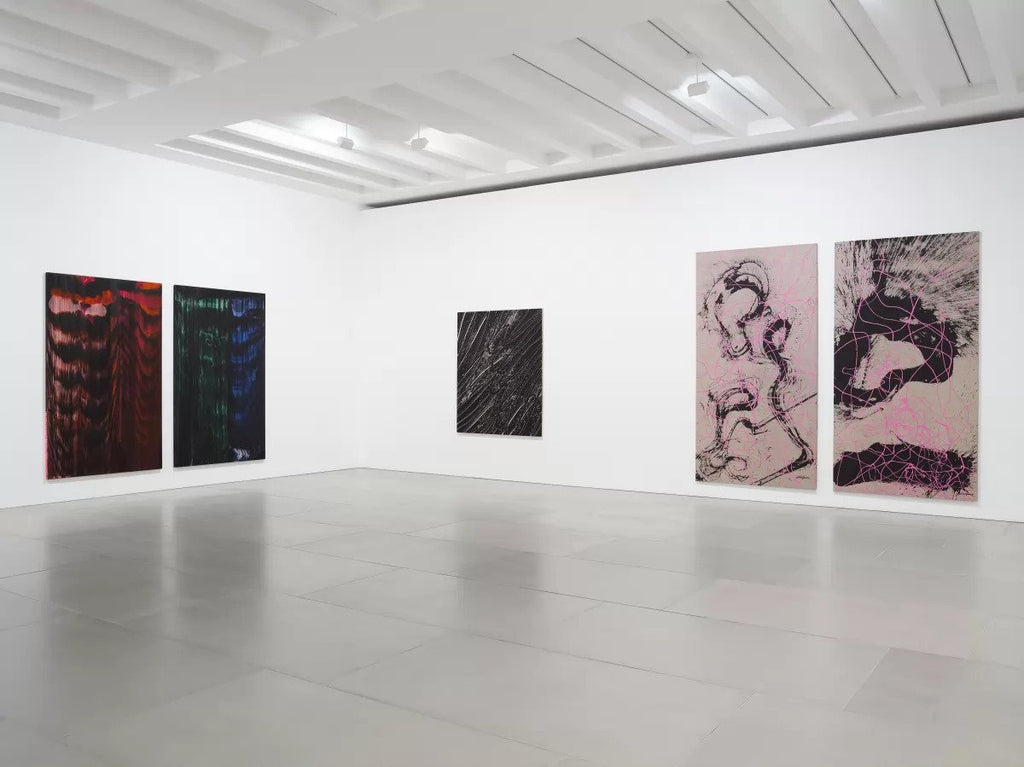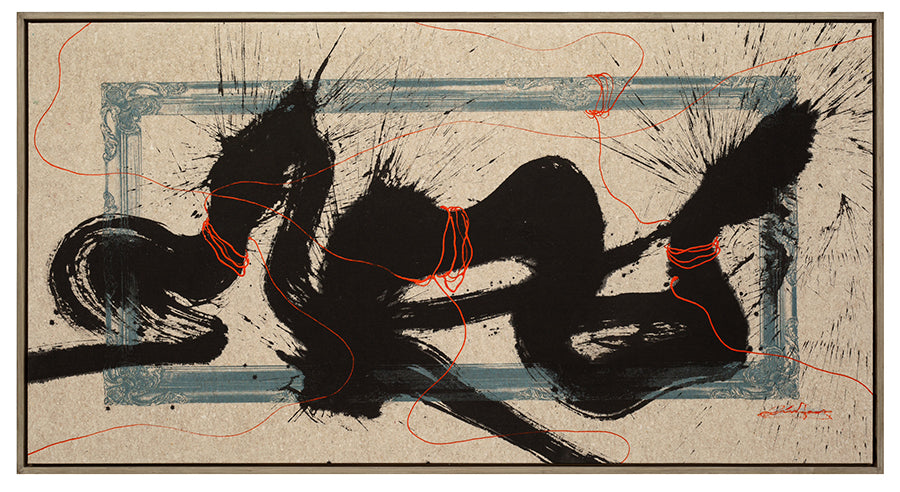
Ed Moses & Qin Feng at Blain Southern London. Photo credit to Blain Southern London
There is a difficult curatorial task at hand with two-person exhibitions; to establish true interrelatedness between the two oeuvres by way of the great question that they ask. In the show 'Ed Moses and Qin Feng', which opened last month at Blain Southern, there is synchronicity and there is fluency, not only in the artistic influences or conversations that are being had between the paintings, but in the entire visitor-experience itself. And so, for those set to embark on the code-breaking exercises that are customary at these abstract shows, here's some direction.
Ed Moses (1926-2018), a crucial figure in the post-war art histories of the American West Coast and an impressive artistic output of half a century, reacted to the phenomenal and physical world as its direct agent. Using unconventional tools such as mops, hoses, rubber scrapers, he would compulsively paint with gestural freedom. But they are not only reactions to the phenomenal world: they are paintings about the very act of painting and it's materiality. Qin Feng (b.1961) a forerunner in the Chinese avant-garde movement, and an internationally revered artist, approached traditional Chinese ink painting in a fresh and complex manner. With his early years spent in Xinjiang, a melting pot of culture types, from Uighur to Taoist, lent him influential fragments of technique in his work. And his 1990 move to Berlin, and later the US at the end of that decade, Western abstraction, such as Kline and Pollock, fed into his painterly format.
Abandoning typical studio practice and working on the hard resistance of the floor, Qin's art is spurred on by torrential flows of energy and intense contemplation. His private philosophy is strongly affected by the Jungian structure of the mind in which there are three main psychic organs; (i) conscious, (ii) personal unconscious and (iii) collective unconscious. Let's focus on the latter: born into an unconscious state and not tabula rasa, we each have in us an inherited potential of grasping emotives and forms. This is the collective unconscious. Thus, there would be some event or some object that we are presented with, after which this inherited potential is constellated and consciously realised.
So, as you anchor in a full panoramic view of the exhibition in the first room, you are dwarfed by the loud celebrations of scale and colour. The paintings are diverse. There are gigantic canvases with thick black forms, cursive and linear, whiplash traceries, applied in haste and with strong rhythmic sweeps of the arm. Some are finished off with thinner line work in pinks, others in reds. Or the paintings of swirling elisions of colour and chromatic parfaits: the reds, blues and greens. The second room offers smaller scale works, even more enormity, and the exhibition's shining star, Desire Scenery N.54. There's a border within a border, and within that a figure and it's trace, steeped in velocity and endlessness. The black figure takes on the form of a dragon's profile, and though its brittleness and blackness comes forward, it is not in the same spirit as the imperial red which slashes and lacerates right through.

If the Jungian tenets hold, then the human context has been laid bare in these paintings. By default, the fluency of inherited potential makes for fluent engagement.
By Zayna Al-Saleh

